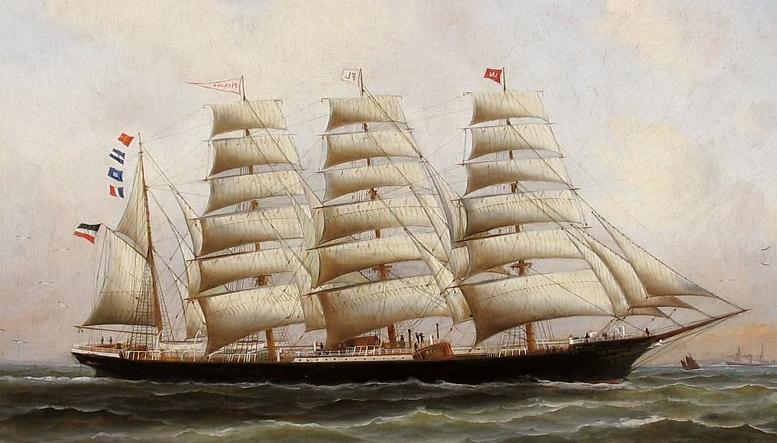|
MARITIME SIGNAL FLAGS |
|
|
|
THE COMMERCIAL CODE OF SIGNALS
•
1857-1902 |
|
MARITIME SIGNAL FLAGS |
|
|
|
THE COMMERCIAL CODE OF SIGNALS
•
1857-1902 |
|
The Commercial Code of Signals was introduced by the British Board of Trade in 1857 and over the next twenty years it gradually supplanted Marryat's Code of Signals for the Merchant Service. Unlike the latter the Commercial Code was based on alphabetical flags, not numerical flags. The system consisted of one burgee (forked flag), five triangular pendants and thirteen rectangular flags. Eighteen of these referenced letters of the alphabet (X, Y, Z and vowels being omitted); the nineteenth was the code pendant. X, Y and Z were omitted as seldom required; vowels were omitted because, as the Board noted, including them would have led to "objectionable words" being spelled out in three- and four-flag signals. Except for AFFIRMATIVE, NEGATIVE and QUARANTINE, all signals consisted of two-, three- or four-flag hoists; in all there were over 70,000 possible combinations. The signals were arranged alphabetically; thus the two-letter signal list began with B followed by the other letters in order, then with C followed by the other letters in order and so on. Each combination referenced one specific signal, with no need for special distinguishing flags or pendants, or flag hoists at different positions. The code book was organized in such a way that signals could be composed and deciphered rapidly: alphabetically by plain language for the sending ship and alphabetically by flag hoist for the receiving ship. Part One listed international signals; Part Two listed signals unique to the British merchant service. The Code/Answering Pendant, hoisted under the sending ship's ensign, signified that a message was to be sent using the Commercial Code. When flown by the receiving ship at the dip (half-hoisted) it signified that a message had been received and was being interpreted; when hoisted close up it signified that the message had been understood. Generally, two-flag combinations were used for frequently sent, urgent or emergency signals. Three-flag combinations were used to send latitude, longitude and time signals. Four-flag combinations with B (red burgee) uppermost were geographical signals; with the pendants C, D, or F uppermost they were vocabulary (phrases, words or spelled-out words) signals; with G uppermost they identified warships; and with any square flag uppermost they identified merchant vessels. The four-letter combinations from GQBC to GWVT were reserved for the identification of warships; HBCD through WVTS were reserved for merchant vessels. Ships could thus identify themselves by hoisting their national ensign and "making their number" with a four-flag signal. Such signals were easily distinguishable from those made using Marryat's code. For warships the signal always had G (a pendant) uppermost rather than Maryatt's white-bordered Union Jack (for the RN) or the war ensign (for warships of other navies), while for merchant vessels the first flag was always rectangular rather than one of Maryatt's distinction pendants.
The Commercial Code
was replaced in 1902 by the initial version of the current
International Code. |
 The German barque Pisaqua making her number (RJPT) in the Commercial Code, circa 1890. |
|||
|
PENDANTS & FLAGS OF THE COMMERCIAL CODE |
|||
|
B |
|||
|
C / AFFIRMATIVE |
D / NEGATIVE |
||
|
F |
G |
||
|
H |
J |
||
|
K |
L |
M |
N |
|
P |
Q / QUARANTINE |
R |
S |
|
T |
V |
W |
|
CODE / ANSWERING PENDANT |
||
| EXAMPLES OF SIGNAL FLAG HOISTS |
||
|
BC • HOIST YOUR ENSIGN |
JD • YOU ARE STANDING INTO DANGER |
KR • DANGEROUS WITHOUT PILOT |
|
BGS • DAMAGE IS REPAIRED |
DHJ • CAPTAIN IS ABOARD |
HVQ • I WILL ASSIST |
|
BPTQ • VIRGIN
ISLANDS |
FBVG • TIDE IS FLOWING
VERY FAST |
QLVR |
|
GSMW • RN SCREW SHIP
OF THE LINE HMS MARLBOROUGH |
GRDF • RN SCREW
FRIGATE HMS DIADEM |